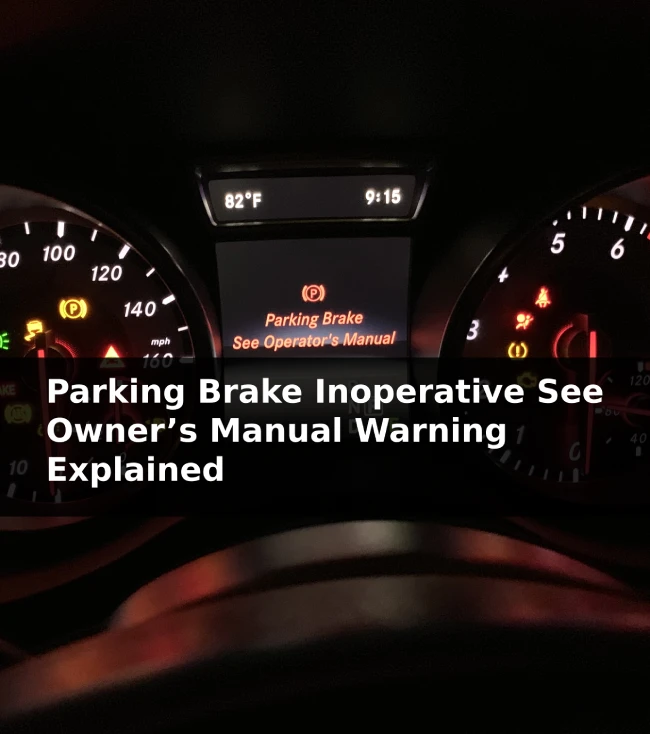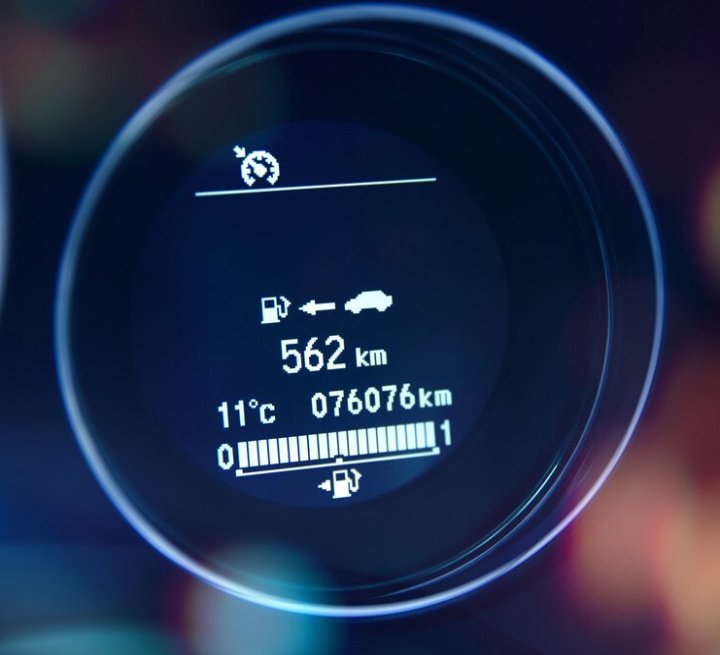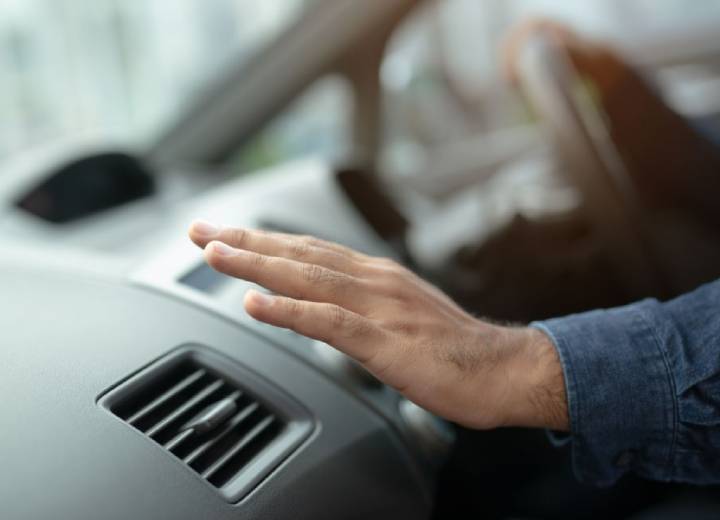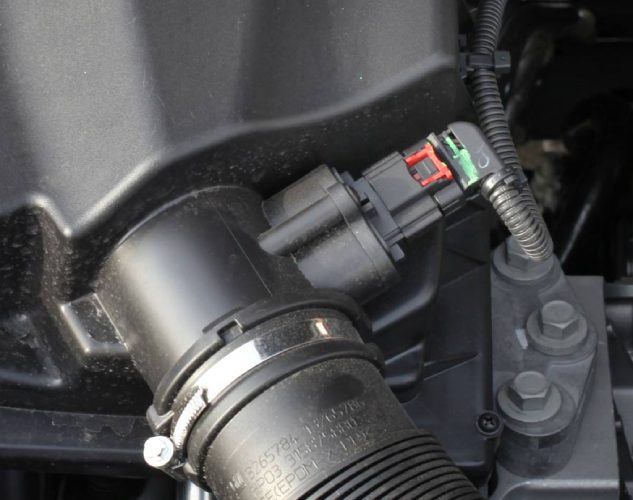Some new car models come with an electronic parking brake (EPB) instead of the mechanical one. Instead of using a hand lever, this new system is activated using a button.
EPB has many advantages over the mechanical system but also has its problems. If there is a fault, you might get the Parking Brake Inoperative See Owner’s Manual warning message on the instrument cluster. The causes vary, but the faulty electronic motor, weak car battery, and faulty EPB switch are the most common.
Read on for detailed information about the causes of this warning message and how you can fix it.
What is an Electronic Parking Brake, and How Does It Work?
An electronic parking brake serves the same purpose as a mechanical hand brake. It locks the wheels when activated, keeping the vehicle stationary. However, it works differently but more efficiently to achieve this function.

An EPB system consists of an actuator button, control unit, sensors, electric motors, Bowden wires, and rear brake elements. These components work together to achieve the braking action you want when you activate the EPB.
The activation begins with a press on the actuator switch. If you want to engage the parking brake, press the EPB switch. That action sends a signal to the electronic brake module, which grants your request by commanding the electric motors installed in the brake calipers to lock the will. The action is completed when the electric motor presses the brake pads against the disc.
EPB deactivates itself when you start the engine and the driver steps on the accelerator pedal.
Causes of Parking Brake Inoperative See Owner’s Manual Warning
EPB is a more complex system than the mechanical lever emergency brake. Hence, there is a high chance of many things going wrong that triggers the warning message. Some of the causes can be the same ones as the ones causing the Electric Parking Brake Problem on Honda Civic. If this error message appears on the instrument cluster, it can be due to the following reasons:
Electric Motor Is on Its Way Out
An electric motor used to press the brake pads against the disc to lock the wheels uses mechanical components. They wear and tear and become ineffective with time. As a result, they will fail to lock the wheels as they should.
Electric motors are the actuators of the EPB system. If they fail to respond, the brake control module senses the fault and the warning message appears on the instrument cluster.
How do you know that electrical motors are not responding? If you are used to the EPB, you should be familiar with the sound from the wheels when electric motors are engaging. If you don’t hear it when you press the switch, electric motors are likely the culprit, but you should also check the parking brake module.
Switch Remains Slightly Engaged Sometimes
A switch on the dashboard activates the EPB system. The driver initiates the braking operation by pressing the EPB switch. Unfortunately, this switch is often exposed in many car models. Drinks and food debris can cause it to malfunction.
The switch can remain partially pressed, continuously sending signals to the brake control module. That triggers the Parking Brake Inoperative See Owner’s Manual Warning message, which appears on the instrument cluster.
Another case is when the switch is not making contact when pressed. It maintains an open position, which will not send signals to the control module to activate the actuators. Although this condition will not cause the error message, it cripples the function of the EPB system.
Check the switch and replace it if it is the culprit, and the EPB should resume its seamless operation.
ABS Sensor or Speed Sensor
A faulty ABS or wheel speed sensor cripples the operation of the ABS. You will notice this by seeing the ABS light, traction control, and brake light illuminating the dashboard. These conditions also interfere with the operation of the parking brake, which can trigger an error message.
You should check all other DTC codes stored in your vehicle’s computer and address or fix the problems. An OBD2 scanner can read the code stored for a faulty wheel speed sensor. You should clean the sensor if it is dirty or replace it if it is defective to bring the ABS and related systems back online. Examine other possible causes if the warning message does not reset after this fix.
Electric Parking Brake Module
An electronic parking brake module is the brain of the EPB system. It receives signals when you press the EPB switch and activates the actuators. If it is faulty, it will not perform this vital function.
Check the electrical connections going or coming from it to ensure no loose wires or pen circuits. If that does not help, contact an expert to examine the module for possible fixes. You may need to replace the entire unit if it is not fixable.
Faulty ABS Module
This is one of the rarest causes of Parking Brake Inoperative See Owner’s Manual Warning, but you cannot rule it out. Corrosion or disconnections to the ABS module can trigger this error message.
A faulty ABS module will turn on the ABS, traction control, and brake lights on the dashboard. The EPB will also malfunction.
Check connections to the ABS module for possible corrosion and disconnections and fix any noticeable problems. If that does not solve the problem, call an expert to check the ABS module. You may be required to replace it if it has an irreparable internal fault.
Weak Car Battery (dashboard will display other warnings too)
Your car battery runs many accessories and systems in the car when the engine is not running, including the EPB. If the battery is weak, it won’t provide enough electrical power for those systems. Apart from the Parking Brake Inoperative See Owner’s Manual Warning, you will also see some dashboard warning lights, the battery light being one of them.
Test your car battery’s voltage with a multimeter. Set the multimeter to DC voltage and connect the red probe to the positive terminal and the black probe to the negative terminal. The battery should read 12.4V or more when the engine is not running. You may need an external charger if it is too weak to crank the engine.
Alternatively, take your vehicle to an auto repair shop for a detailed diagnosis. Car batteries weaken with time. So, you may need to replace it if recharging does not work.
Related content: How Can A Bad Battery Cause A Car To Misfire?
Loose, Broken, or Corroded Actuator Connectors
Electric motors/actuators get power from the car battery and lock the wheels when they get a signal from the brake control module. The electrical connectors to these actuators may corrode, break, or become loose over time, creating an open circuit. Check all the wires and ensure continuity. You may need to reconnect disconnected wires or replace corroded or broken ones.
Software Glitches
Software problems can cause the brake control module to malfunction. It is also a rare problem but can never be ignored.
A software glitch may be the last thing you will look at after ensuring the hardware is not the culprit. You will need the dealer to help you update the software to resolve any issues.
Is There a Temporary Fix for This Issue?
Yes. You can temporarily fix the Parking Brake Inoperative See Owner’s Manual Warning on your car. If it appears, pull over when it is safe and follow these steps:
- Set the transmission to park
- Turn off the ignition and turn it back on again
- Pull or press the EPB switch, depending on the design of your car, and keep it in that state for 10 seconds and release it.
- Start the engine, and the warning should turn off.
However, the temporary fix described may not apply to all automobiles. Don’t feel frustrated when it does not work in your case.
Can I Still Drive My Car If I Have This Issue?
Yes. Your car is safe to drive with this warning message on the instrument cluster, provided the master brake warning stays off. It only informs you that your parking brake may not engage.
You should fix this problem as soon as possible to avoid straining your transmission or your vehicle rolling in the parking lot. It may endanger other drivers and cause damage to properties. It is advisable to contact your mechanic or drive straight home and block the wheels with bricks as you wait to diagnose the problem.
Is There A TSB Addressing the Issue?
Yes. TSB has addressed the Parking Brake See Owner’s Manual warning message on the instrument cluster. Left and right brake calipers malfunctions caused by electrical shorts or open circuits are the most common. More details are on this document on the NHTSA website.
Final Remarks
The Parking Brake See Owner’s Manual warning can be frustrating, especially if it happens to you for the first time. Fortunately, it is due to a low-risk fault that you can fix in a few steps or use a few bucks at an auto repair shop to get it fixed. Let it be done at the first chance to avoid possible accidents and damage to your car and other properties.
Brian is an auto technician who writes DIY repair articles and creates how-to videos for MechanicAsk. He focuses on common repairs like brakes, oil changes, and lighting. Brian draws on his 5 years of dealership experience to explain repairs in an easy-to-follow manner, even for novice do-it-yourselfers. His technical articles always include detailed tool lists, supply checklists, and visual guides.








